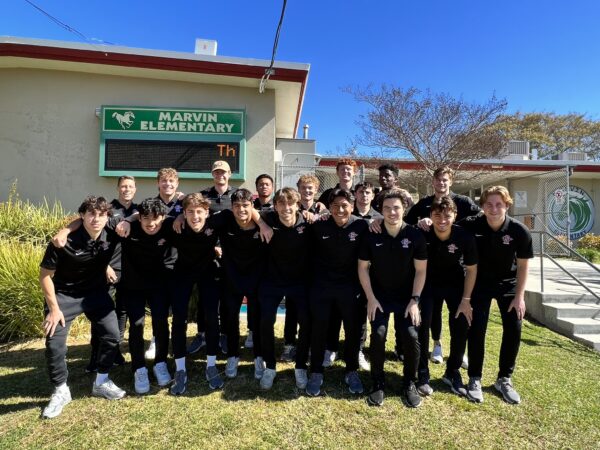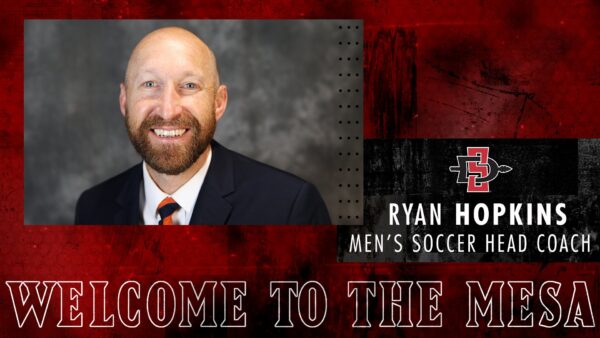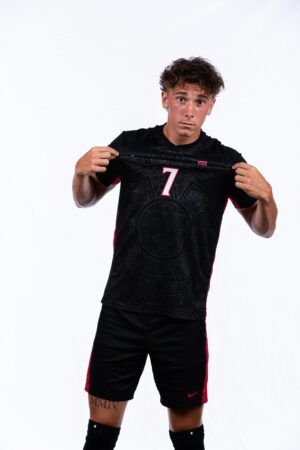MLS expansion franchise to benefit SDSU Men’s Soccer

Credit: Derrick Tuskan/San Diego State

The biggest news in San Diego sports this past month was Major League Soccer’s (MLS) announcement on May 18th, awarding San Diego the league’s next expansion franchise. The team, yet to officially have a name, will play its inaugural season in 2025.
Professional soccer has thrived in America’s Finest City as far back as 1978 with the San Diego Sockers and, more recently, the USL’s San Diego Loyal and NWSL’s San Diego Wave.
“I couldn’t be more excited for that,” said Ryan Hopkins, the head coach of SDSU men’s soccer, on an upcoming episode of The SDSU Podcast. “I think it’s an unbelievable soccer culture (in San Diego). There’s such a soccer excitement and fever here. To get it to the highest level of what we have in men’s professional soccer in our country and to have it here in such a perfect stadium for soccer, I can’t wait to get out there and enjoy it as a fan.”
That “perfect stadium” is Snapdragon Stadium, owned by the school that employs Hopkins. What opponents of San Diego State’s bid to procure the Mission Valley land for a multi-use stadium said, that MLS would never come to San Diego if SDSU prevailed, have ultimately proven false.

SDSU, behind Athletic Director J.D. Wicker, built Snapdragon Stadium primarily for its football program but made sure to build the stadium with design features and future enhancements that met MLS stadium requirements.
Less than one year into its existence, Snapdragon Stadium has been secured as the home of an MLS team.
“I give a lot of credit to (Wicker) and obviously, President De La Torre, as well, both (for) their visions of how they constructed the stadium and what they promised,” said Hopkins. “They promised when they went to build the stadium that (it) was a real possibility that an MLS team would be here, and here it is. I think they have to get a lot of credit for laying out that vision and, quite honestly, executing it on time (and) on budget.”
The immediate and direct benefit of an MLS franchise in San Diego for SDSU is financial. In order to play at Snapdragon Stadium, the MLS franchise signed a lease agreement with SDSU. While the contents of the agreement have not yet been made public, playing at least 17 home games at the stadium each season will provide substantial monetary benefits to the school.
The secondary benefit to SDSU that may not be as readily apparent is the increased development of youth soccer in San Diego and how that can improve recruiting for SDSU.
The MLS franchise will arrive in San Diego along with a local chapter of Right to Dream, a worldwide football academy led by Tom Vernon that scouts and develops youth soccer players. They currently operate in Ghana, Denmark, and Egypt. The plan is to use the San Diego chapter to find local youth players as young as 12 years old, not just in San Diego, but the greater Southern California and even across the border in Tijuana, Mexico, to become eventual players for the MLS team.
Tom Penn, the CEO of the new franchise called Right to Dream, its club identity and foundation and expects the earliest versions of the club rosters will include many from the academy.
While the goal of the academy is to prepare footballers to play professionally, some end up initially pursuing collegiate careers in the United States to further their development before entering the MLS SuperDraft.
This is where SDSU can and will greatly benefit.
“They’ve done an unbelievable job as an academy of producing talent not only for the professional game but obviously for the college game,” said Hopkins when asked about Right to Dream.
Shakur Mohammed, chosen by Orlando City with the 2nd pick of the 2023 MLS SuperDraft, developed in the Ghana academy before emigrating to New York to finish high school and play collegiately at Duke for two seasons.
Coincidently, Hopkins was in Ghana around the timing of the MLS announcement, a trip planned in March related to different showcases he planned to attend. While there, he was able to visit the Right to Dream facility in the village of Old Akrade in eastern Ghana.
“It was pretty fun to see the whole operation that they have going on there,” recalled Hopkins. “You have to take a boat across a river to get there, so you’re hearing kind of like this safari type of a deal, and then you get there, and you have the school, and then you actually walk through the village to get to the field so you’re kind of like transported into like two different worlds. It’s a pretty unique, special experience.”
Hopkins lauded the incredible overall talent level in Ghana and noted there are several others from Ghana, in addition to Mohammed, who have come over to the United States and played collegiate soccer before turning professional. Hopkins also mentioned the academy has a couple of players currently in prep schools on the East Coast that the Aztecs are recruiting.
Around the world, the majority of soccer academies are built around 12 to 14-year-olds who drop out of school to pursue professional careers. If these children are unable to reach soccer’s highest levels, they end up falling victim to failed careers and a lack of education to rely on.
Right to Dream aims to do it a bit differently, which is why Hopkins believes the pairing is a perfect match.
“When we met with some of the administrative side of Right To Dream, I think that’s why we align so well because I think when you look at developing footballers, the vision of Right To Dream is to develop them holistically, develop them as people first, develop them educationally and then obviously if they have the ability to get to a professional level, they can go there,” he described.
If the professional aspiration does not work out, education picks up the slack.

“A big part of our culture here (at SDSU) is developing them as people, developing their core values that we have here, and then preparing them for the real world,” Hopkins said. “It still could be professional soccer. Obviously, we’ve shown that we can do that as well, but it might be professional in something else with a world-class degree from an amazing university. Having that as our guiding principle, I think there’s going to be a lot of alignment. I think it’s going to be a really unique way that they’re doing it, and I think it’s going to help set them apart.”
Working with San Diego’s MLS franchise will not be the first time SDSU has partnered with a local professional soccer team to fill its roster. CJ Fodrey, a product of the San Diego Loyal USL academy for two years while he attended Coronado High School, joined SDSU for the 2022 season.
After scoring seven goals and tallying four assists, Fodrey was named the Top Drawer Soccer National Freshman of the Year and was drafted by Austin FC with the 13th pick of the 2023 MLS SuperDraft.
“I think the soccer culture that we have here in San Diego is quite strong, and obviously (Fodrey) was kind of born from that,” Hopkins said. “I think it does show that you can come (to SDSU) from that … I think it just adds another element to our recruiting.”
The relationships SDSU soccer has built with the Loyal over the past four years continue to grow and work reciprocally. There are SDSU soccer alums currently on the Loyal. They played exhibition matches against each other the past two springs. The relationships Hopkins has developed with the leaders of the Loyal have fueled those mutual benefits.
SDSU last reached the NCAA Final in 1987, 36 years ago.
“It can be done here,” exclaimed Hopkins, who was an assistant coach at Virginia in the NCAA Final in 2019 before accepting the head coach position at SDSU.
If it does, the lasting relationship with the new San Diego MLS franchise and its Right to Dream component will surely play a large role.
Avid sports fan and historian of basketball, baseball, football and soccer. UC San Diego and San Diego State alumni living in America’s Finest City. Diverse team following across multiple sports leagues, but Aztecs come first in college athletics.